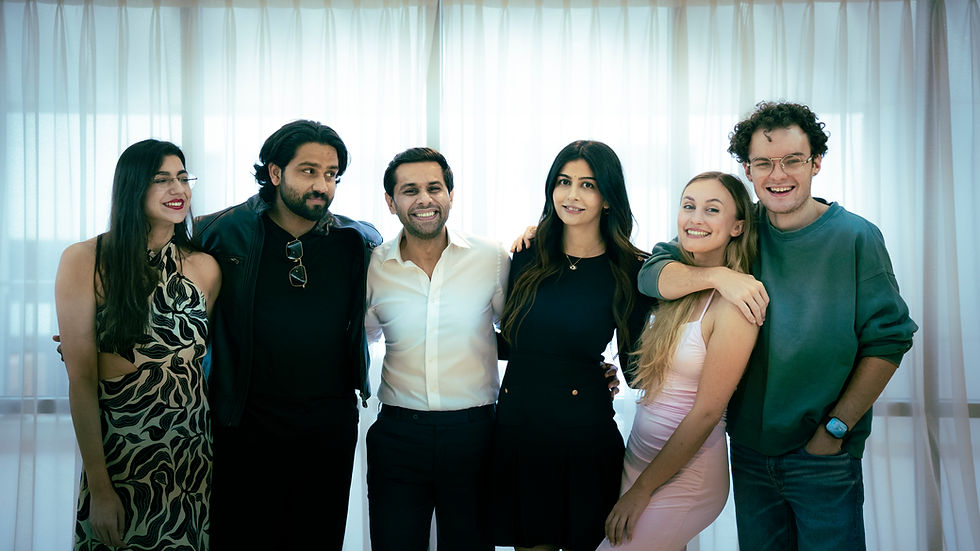Make mistakes, that's what this artist wishes to tell AI!
- From the desk of Stories Over Art

- Feb 5
- 3 min read
Throughout her career, she has held numerous solo exhibitions, such as Magic Forest at the Tretyakov Gallery in Moscow (2021), New Habitat at Köttinspektionen in Uppsala (2018), and Reproduction at the Triumph Gallery in Moscow (2012). Her work has also been featured in group exhibitions internationally, including GENERATION XXI at the State Tretyakov Gallery (2020) and the Ural Biennial of Contemporary Art (2017). Korotkova’s art has been showcased at significant venues across Europe and Russia, including the Swedish Family exhibition at Uppsala Konstmuseum (2010) and the Fifth Moscow Biennale of Contemporary Art (2014). She has also contributed to numerous publications, such as Frozen Dreams: Contemporary Art from Russia (2011). With her diverse work, Korotkova remains a prominent figure in contemporary art.
Taisia Korotkova, born in Moscow, Russia, in 1980, is a contemporary artist based in Milan, Italy. She is a Moscow Academic Art College graduate, named after V.I. Surikov (1991-1998), and the Moscow State Academic Art Institute named after V.I. Surikov (1998-2004). In addition, she studied at the Institute of Contemporary Art, Moscow (2002-2003) and has been a member of the Moscow Union of Artists since 2004. Korotkova has received several prestigious accolades, including the 2010 Kandinsky Prize for Artist of the Year for her “Reproduction” series and a grant from the Ministry of Culture of Russia in 2004.
What’s your earliest memory of creating art?
When I was five, my father gave me a box of gouache colors and some brushes as a birthday gift. He showed me how to use them, and I still remember the smell of that paint. My favorite subjects were horses and ladies.
If you could collaborate with any artist, living or dead, who would it be and why?
Pieter De Hoogh, asking him about his compositional secrets would be amazing.

What’s the weirdest thing you’ve ever used as a medium/tool/platform in your artwork?
Textile dust from the drying/ iron machine. I built a flying ghost house-bunker from it for my exhibition Dark Forest.
How do you come up with the titles for your pieces?
Usually, I start the project by writing down sentences regarding the topic of the future work, so the title often appears from those notes.
What’s the most unusual source of inspiration you’ve ever had?
Anesthesia in hospital.
If you could only use three colors/instruments/ software for the rest of your life, which would you choose?
Paper, soft pencil, and eraser. Everything else ( colors, for example) I can take from nature.

What piece of art do you take the most pride in and why?
Ancient Greek sculpture. I wonder how they combined realistic and idealistic shapes and, as a result, got such a humane, alive character.
If your art had a soundtrack, what would be the top three songs on it?
It’s too difficult to choose!
How do you deal with a creative block?
I don’t remember if I had one in my entire life.
What’s one piece of advice you’d give to ARTIFICIAL INTELLIGENCE aspiring to replace ARTISTS?
Try to make mistakes.
What would you be doing if you weren’t an artist?
Paleontologist or gardener.
What’s the strangest place you’ve ever found inspiration for a piece?
Hospital
What’s your favorite part about the process of creating art?
Finishing the work
If you could have your artwork displayed anywhere in the world, where would it be?
Space station
What’s one thing people would be surprised to learn about you as an artist?
I’m lazy and can happily do nothing for hours.
Fictional Landscapes, a groundbreaking exhibition, recently showcased the works of 28 women artists, including Taisia Korotkova’s work, across five galleries in Dubai at Foundry Downtown Dubai.
Dark Forest Series (2017- 2022)
What could happen if humans use high technologies in the wrong way? My project, Dark Forest, is dedicated to a Russian “stalkers’’ subculture: to the people who romanticize and explore abandoned military zones. They have numerous blogs about their adventures, which sound like contemporary fairy tales. I decided to find out how the echo of the prehistoric rites contained in the traditional fairy tale penetrated contemporary life. Is there a connection between modern militarism and the rituals of a primitive culture? In my drawing, military objects built during the Cold War and after are seen throughout the forest. They remind me of ancient ritual architecture. The forest unites different kinds of plants, which can grow together only after an ecological disaster. I use black markers, considering the manner of fairy tale book illustrations. The foundation for my drawings is the backside of an oilcloth, a modern synonym for traditional home textiles. Using this material, I remember the critical role of women as fairy tale keepers, storytellers, and, in the past, ancient leaders of the passage rites. The project consists of big-scale drawings on tablecloths, installations, found objects and smaller drawings on tablecloths.










Comments